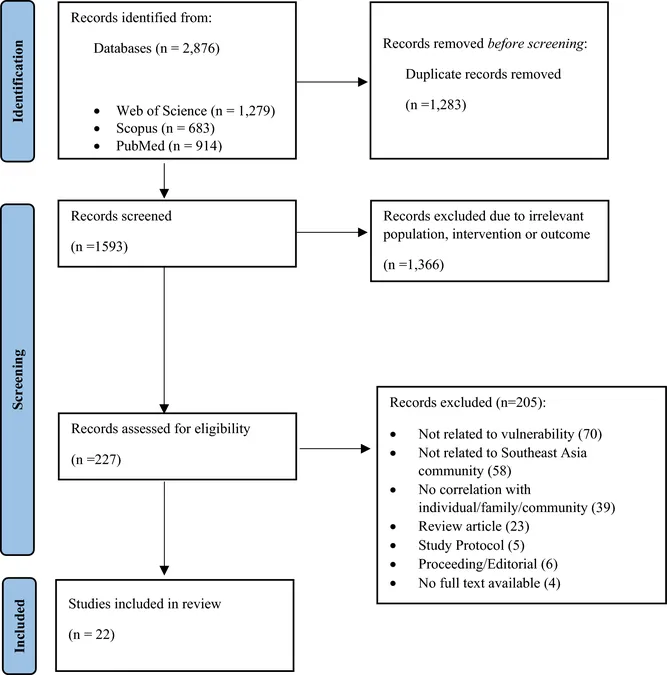
Unearthing the Hidden Malaria Crisis in Southeast Asia: Vulnerabilities Exposed
2025-08-04
Author: John Tan
A Malaria Emergency Looms in Southeast Asia
Despite advancements over the last decade, malaria remains a formidable public health threat in Southeast Asia (SEA). The region is marked by alarming disparities in malaria incidence, largely driven by factors such as population movement, vector resistance, and inconsistent control measures. Countries like Vietnam and Cambodia have made strides in reducing transmission rates, while others, including Myanmar, Laos, and Indonesia, remain heavily burdened by the disease. Even more troubling is the recent uptick in malaria cases along the western Thai-Myanmar border, indicating a shift in malaria dynamics.
The Current Landscape: Progress and Setbacks
From 2000 to 2022, SEA saw a remarkable 77% drop in malaria cases, plummeting from 22.8 million to 5.2 million. Yet, the region faced over 8,000 malaria-related deaths in 2022 alone, underscoring its significant share of the global malaria burden—18%. This persistent vulnerability stems from the slow down in progress due to issues like drug resistance, particularly to artemisinin, difficulties in accessing remote communities, and geopolitical instability.
Innovative Control Strategies: Are They Enough?
Malaria control in SEA hinges on vector control and treatment strategies, including insecticide-treated bed nets (ITNs), indoor residual spraying (IRS), and artemisinin-based combination therapies (ACTs). Countries such as Cambodia and Myanmar have ramped up ITN and IRS distributions, especially in high-risk rural areas. Furthermore, rapid diagnostic tests (RDTs) have improved diagnostic capabilities in remote locations, enabling quicker treatment responses.
Deep Dive into Vulnerabilities
However, significant vulnerabilities persist, primarily impacting marginalized groups. Malaria transmission in SEA is deeply intertwined with geographical, environmental, and socioeconomic factors. The tropical climate fosters ideal breeding conditions for Anopheles mosquitoes, while economic inequalities limit access to diagnostics, treatment, and prevention.
A Social Determinants Lens
This scoping review aims to unearth and categorize the vulnerabilities influencing malaria risk in SEA, utilizing a social determinants of health framework. The analysis highlights that vulnerability isn't just a biological issue—it's a reflection of systemic inequities, environmental exposures, and limited access to crucial services.
Study Methodology: Mapping Vulnerability Factors
Following PRISMA-ScR guidelines, the review integrates a thorough literature search across major databases to identify recent studies focused on malaria vulnerabilities in SEA. It embraces study populations within endemic regions, aiming to synthesize key determinants influencing malaria risk—from demographic and environmental factors to healthcare accessibility.
Key Findings: What the Data Reveals
The review identified biological influences such as prior malaria history elevating infection risks drastically. Demographic parameters showed notable gender discrepancies, with males generally at higher risk due to occupational exposures. Environmental conditions—including proximity to forests, elevation, and land use changes—greatly affected vulnerability, while poor housing conditions exacerbated infection risks.
Addressing Behavioral Dimensions
Behavioral practices also emerged as critical determinants of malaria vulnerability. Inadequate use of preventive measures, like bed nets and repellents, alongside risky nighttime behaviors, significantly increased infection rates. On the flip side, effective interventions like indoor residual spraying have proven beneficial.
Healthcare Access: Barriers that Hinder Progress
Access to health services remains a critical gap. Limited awareness and healthcare disparities heighten vulnerabilities, particularly among marginalized groups. In the Philippines, proximity to trained health workers drastically increased treatment effectiveness, while inadequate healthcare access resulted in higher malaria incidences.
Global Context and Implications
The review illuminates the intricate web of factors shaping malaria vulnerability in SEA, mirroring global trends. Unique ecological, social, and political contexts necessitate targeted, equitable interventions to combat malaria effectively. A multi-faceted approach is essential for advancing health equity and eliminating malaria in the region.
Moving Forward: Strategies for Change
Understanding the interplay of risk factors is vital for crafting effective malaria elimination strategies. Emphasizing community engagement and incorporating local knowledge may foster better educational outreach and enhance disease prevention. Investment in healthcare accessibility and innovative solutions can pave the way for a malaria-free future.




 Brasil (PT)
Brasil (PT)
 Canada (EN)
Canada (EN)
 Chile (ES)
Chile (ES)
 Česko (CS)
Česko (CS)
 대한민국 (KO)
대한민국 (KO)
 España (ES)
España (ES)
 France (FR)
France (FR)
 Hong Kong (EN)
Hong Kong (EN)
 Italia (IT)
Italia (IT)
 日本 (JA)
日本 (JA)
 Magyarország (HU)
Magyarország (HU)
 Norge (NO)
Norge (NO)
 Polska (PL)
Polska (PL)
 Schweiz (DE)
Schweiz (DE)
 Singapore (EN)
Singapore (EN)
 Sverige (SV)
Sverige (SV)
 Suomi (FI)
Suomi (FI)
 Türkiye (TR)
Türkiye (TR)
 الإمارات العربية المتحدة (AR)
الإمارات العربية المتحدة (AR)